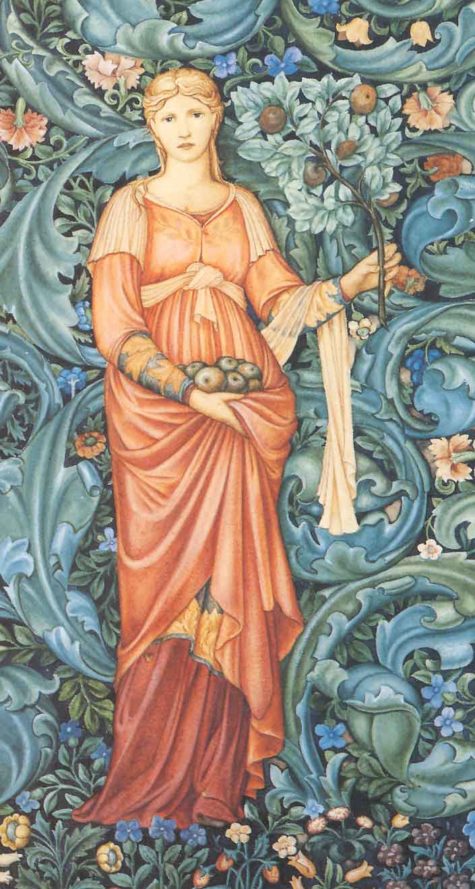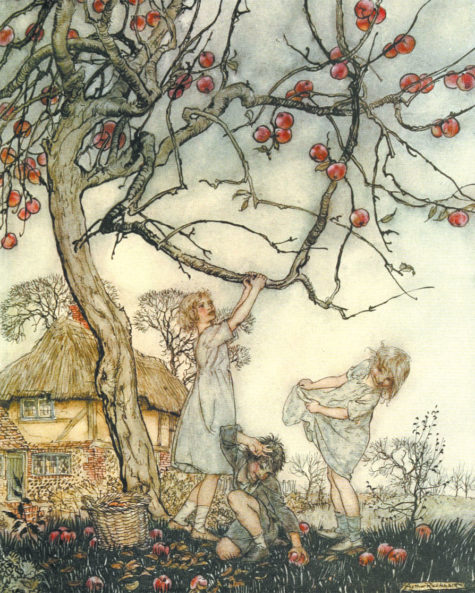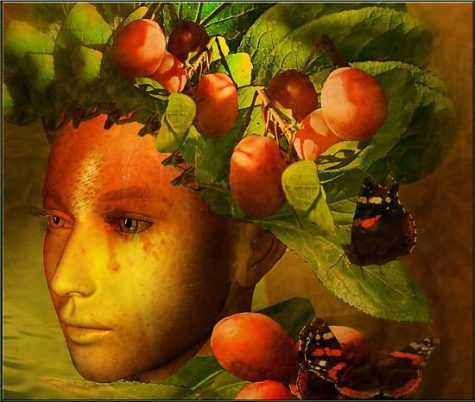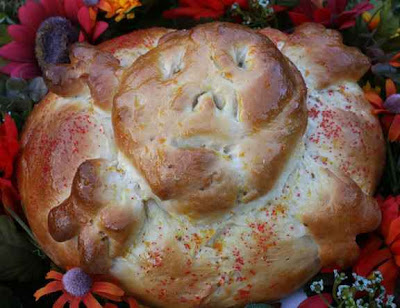Monthly Archives: November 2017
Pomona’s Day of Honoring is often cited as November 1, making it a close match to the Celtic holiday Samhain. But sometimes it’s cited as August 13. Taken together, those days bracket the apple season. The earliest dessert apples begin to ripen in late summer, while the last storage apples finish in late autumn.
Even before the Romans added Pomona to the Samhain festivities, the Celts traditionally roasted apples and nuts in the bonfires. Pomona’s associations strengthened the role and symbolism of this fruit in connection with the holiday. This may be the origin of the modern custom of “bobbing for apples.”
To do on Pomona’s Day:
- Plant an apple tree.
Trees set out during the autumn planting season have a chance for extra root growth before they leaf out in the spring. Invoking Pomona’s blessing for her favorite type of tree will help your apple sapling grow big and strong.
This is especially helpful for grafted trees, which are a little more fragile than self-rooted trees and can use a boost from the goddess of grafting.
- Do some divination.
Do divination or other magic with fruits and nuts. The seeds, peels, and flesh of fruiting plants are useful in many types of divination and spellcraft. At this time of year, the veil between worlds is thin, making divination easier and more effective.
Divination with apples includes such things as cutting the peel from an apple all in one strip and tossing it to reveal the initials of one’s future spouce, placing apple seeds on the coals to see if they lie quietly (fortelling a happy relationship) or fly apart (foretelling heartbreak), and cutting an apple in front of a mirror to scry one’s beloved.
- Practice some Apple Magick.
Another set of practices draws on the apple’s qualities as a magickal fruit with power over the otherworld. These rituals deal with death and banishing. An apple may be cut in half and buried to cure a disease, settle a quarrel, or break a bad habit. Apples are also sometimes thrown to drive away evil spirits, or left out to feed the spirits of the dead so they do not trouble the living.
Ritual for Pomona’s Day
Here is a nice little ceremony to honor Pomona on her day:
- Colors: Red, yellow, green
- Earth
- Altar: Upon cloth of any or all of these colors, lay baskets of apples (preferably the old Roman variety “Lady”)and other tree fruit, a jug of cider, and a pruning knife.
- Offerings: Water fruit trees.
- Daily Meal: Vegetarian, with any food made with apples.
Invocation to Pomona
Lady of the Apple Tree
Whose red-cheeked visage greets the dawn,
Lady of the Pear Tree
Whose sweetness salves the questing tongue,
Lady of the Peach Tree
Whose blush transforms the morning sky,
Lady of the Plum Tree
Whose scent entices, smooth and smiling,
Lady of the Cherry Tree
Whose scarlet lips are drenched in raindrops.
Lady of the blossoming branch
Who entices bees to dance with you,
Lady of the secret orchard
Where Vertumnus gained his entry,
Where he came in secret, clothed in
Vestments of the ancient Crone,
God of growth, god of seasons,
God of turning, he took you there
As you offered up your nectar
And all the trees above you burst their buds.
Lady of the ancient ones, the Trees
Who give forth their children one by one
That we may know not just mere survival
But sweetness as well, help us to remember
The beauty and abundance of your gifts.
Chant:
Pomona Pomona
Pomum Pirum Prunus
Pax Pactum Promissio
Sources:
The Mourning Moon is upon us. As the days grow shorter and the sun’s life-giving fires are banked, sometimes it seems so dark we feel the light will never return. This moon, however, is a reminder that death is just a part of the endless cycle of life, death, and rebirth.
It’s also known as the Fog Moon or Snow Moon, depending on where you live. Some Native American tribes referred to it simply as The Moon When Deer Shed Antlers (although in most regions it’s more accurate to say they’re shedding their velvet – a buck doesn’t usually lose antlers until later in the winter, unless you’re very far north).
Correspondences:
- Colors: Gray, blues
- Gemstones: Lapis lazuli, turquoise, topaz
- Trees: Cypress, alder, hazel
- Gods: Bastet, Isis, Kali, Hecate, Astarte
- Herbs: Thistle, betony, verbena, fennel
- Element: Water
In the early Celtic society, November was the beginning of the new year, and so it makes sense to use the magic of this moon phase to celebrate new beginnings.
This is a time of washing away the baggage of the past and letting it go. Once you’ve done that, you’ll be able to focus on the joys of the future. During the Mourning Moon phase, say goodbye to bad habits and toxic relationships, and get a fresh start for the new year. Work on developing and strengthening your connection with Spirit.
The pan de muerto (Spanish for Bread of the Dead or Day of the Dead Bread) is a type of bread from Mexico baked during the Dia de los Muertos season, around the end of October and the official holiday is celebrated on November 2. It is a soft bread shaped in round loaves with strips of dough attached on top (to resemble bones), and usually covered or sprinkled with sugar.
Another bread in the form of a sphere on the top represents a skull. The classic recipe for Pan de Muerto is a simple sweet bread recipe with the addition of anise seeds.
Pan de Muerto is sometimes baked with a toy skeleton inside. The one who finds the skeleton will have “good luck.” This bread is eaten during picnics at the graves along with tamales, cookies, and chocolate.
Ingredients:
- 1/4 cup milk
- 1/4 cup (half a stick) margarine or butter, cut into 8 pieces
- 1/4 cup sugar
- 1/2 teaspoon salt
- 1 package active dry yeast
- 1/4 cup very warm water
- 2 eggs
- 3 cups all-purpose flour, unsifted
- 1/2 teaspoon anise seed
- 1/4 teaspoon ground cinnamon
- 2 teaspoons sugar
Instructions: Bring milk to boil and remove from heat. Stir in margarine or butter, 1/4 cup sugar and salt.
In large bowl, mix yeast with warm water until dissolved and let stand 5 minutes. Add the milk mixture.
Separate the yolk and white of one egg. Add the yolk to the yeast mixture, but save the white for later. Now add flour to the yeast and egg. Blend well until dough ball is formed.
Flour a pastry board or work surface very well and place the dough in center. Knead until smooth. Return to large bowl and cover with dish towel. Let rise in warm place for 90 minutes. Meanwhile, grease a baking sheet and preheat the oven to 350 degrees.
Knead dough again on floured surface. Now divide the dough into fourths and set one fourth aside. Roll the remaining 3 pieces into “ropes.”
On greased baking sheet, pinch 3 rope ends together and braid. Finish by pinching ends together on opposite side. Divide the remaining dough in half and form 2 “bones.” Cross and lay them atop braided loaf.
Cover bread with dish towel and let rise for 30 minutes. Meanwhile, in a bowl, mix anise seed, cinnamon and 2 teaspoons sugar together. In another bowl, beat egg white lightly.
When 30 minutes are up, brush top of bread with egg white and sprinkle with sugar mixture, except on cross bones. Bake at 350 degrees for 35 minutes.
Makes 8 to 10 servings.
Recipe found at: AzCentral








